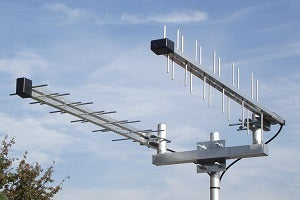Duftoase
Off to the internet – but how?
Off to the internet – but how?

Image source: www.gratisography.com
Today, high-speed surfing is as normal as driving a car or making a phone call. At least the spots from various providers will click for you. But who can still see through the jungle of cable, DSL and LTE? We are trying to shed light on the matter and have identified the advantages and disadvantages of the various distribution technologies for you. We would like to introduce these to you in a little more detail in this article.
Cable – a question of where you live
Internet via fiber optic cable is now relatively established in Germany. The broadband connection via fiber optic cable is characterized by high resilience, which is particularly important when downloading large amounts of data and for games. Compared to DSL, the down and upstream is higher, up to 100 MBit/s and 40 MBit/s respectively. It's also worth considering a cable connection in terms of price. As a newcomer, you can count on good discounts or free trial months. It's best to simply compare the different providers such as Kabel Deutschland, Unitymedia, Telecolumbus and whatever they are called.
However, many cable providers have built-in speed throttling when numerous users of a cluster are downstream or upstream at the same time. Then the transfer rate can drop and you have to expect longer loading times. This is not the norm, but you should still be aware of it. In addition, the cable network in Germany is not yet comprehensive, so there are always “coverage gaps”. A cable connection for television and radio is not enough, as the lines for the Internet and telephone must have return channel capability. So before you decide on a cable provider, you first have to clarify whether it is possible to get Internet via a fiber optic cable in your own home. The best way to do this is to use the availability checks of the respective providers.
LTE – is the fastest
LTE has been making a name for itself for some time now. The abbreviation stands for Long Term Evolution and has replaced UMTS. Biggest advantage: It is many times faster than any DSL connection. However, not too many users are allowed to tap into an LTE cell at the same time. The LTE network is still focused more on rural areas because the new technology closes the DSL gaps there. But the new technology can already be used in many large cities. The problem is usually that you have to find the right hardware and the right LTE contract. LTE is relatively expensive, but also significantly faster. Here it is important to weigh up what you prefer. Fortunately, relevant internet portals can help you choose a suitable tariff. Here you will receive comprehensive information, advice and often find cheap offers. If you are also interested in new products from the LTE sector, we can recommend the FTS antenna blog . The latest developments are regularly reported there.
But DSL?
Why not. The line network is dense, stable and guarantees the same transmission speed at all times (at least in theory). With a normal DSL connection you can access a rate of 16 MBit/s in the downstream and 1 MBit/s in the upstream. That should be enough for normal research and communication. However, if you're hoping for high-speed Internet, a normal DSL connection won't really get you very far. You are a little faster with the VDSL variant, where the transmission range increases to up to 50 Mbit/s or 5 Mbit/s. Unfortunately, VDSL almost always comes with a surcharge, which negates DSL's greatest strength (the low price). In addition, the cables laid in the house also determine the speed of the Internet. Another advantage is certainly the greater choice of operators, which leads to cheaper prices. This also means that you have to spend longer on the topic, but competition stimulates business and you can enjoy special offers.
—
You might also be interested in:
HOME: free annual subscription for allmaxx users
TIME : Test for 5 weeks and save 40% + gift of your choice
Apple : for allmaxx members when purchasing an Apple product, a 10% student discount and an additional App Store gift card of up to €80
Share


